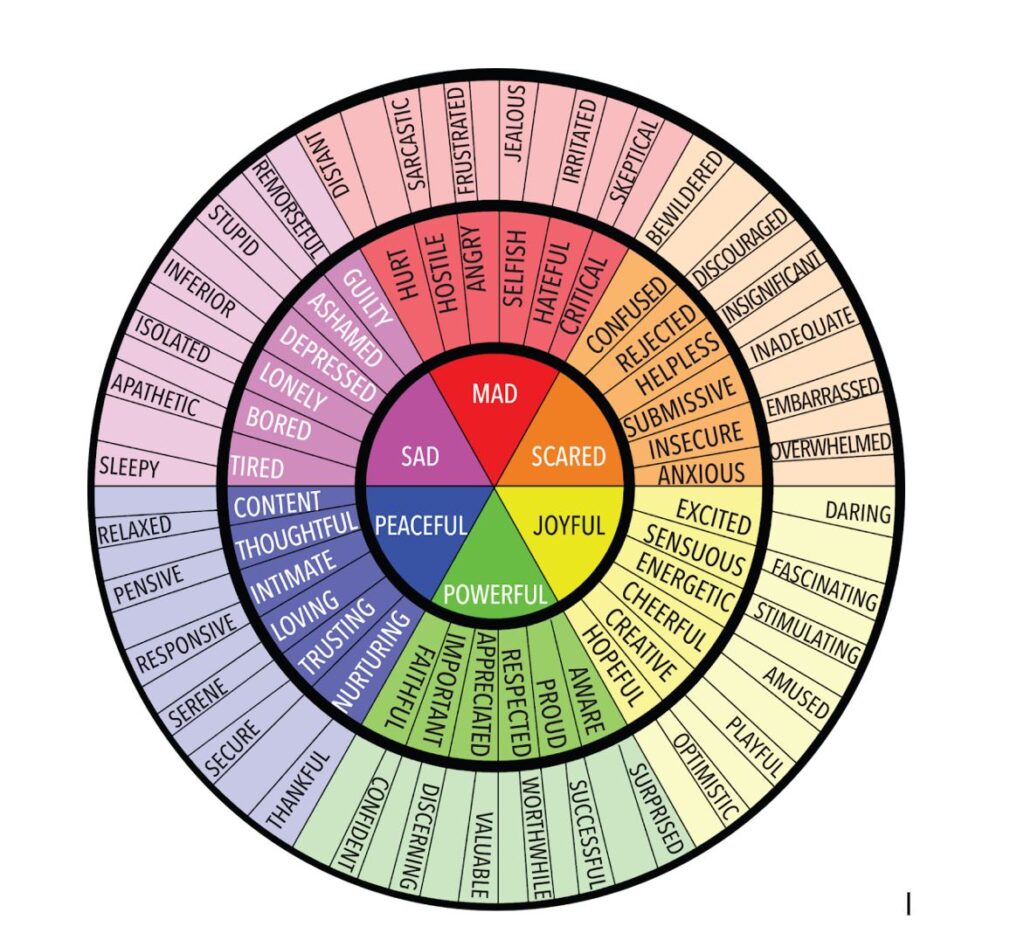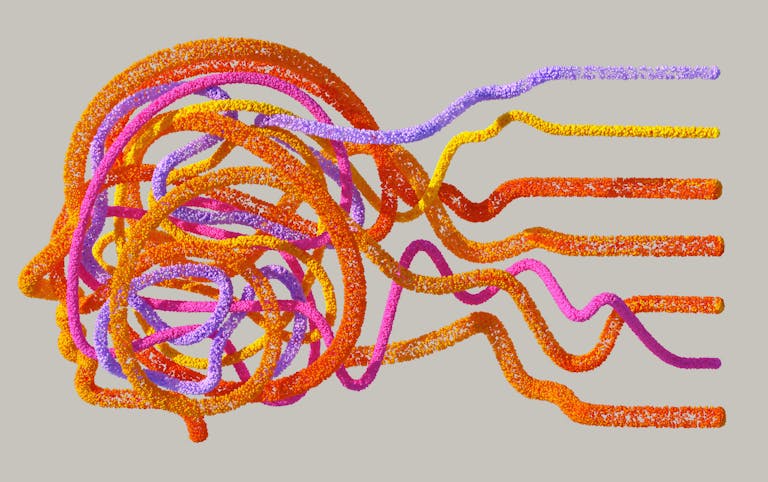IDENTIFY FEELINGS
IDENTIFY FEELINGS
FEELINGS
The majority of the time, when people start recovery work, they aren’t aware of their feelings. They often feel either anger or numbness. Or good. But good is not a feeling. Others come because they are worried and struggling with obsessive thoughts. The obsession is almost always over something they are powerless over. Perhaps it’s a family member or friend or the future. All of which are out of their control. We slowly become aware of these thought distortions in our recovery journey to peace, serenity, and wholeness.
Today, we will start by permitting ourselves to discover precisely how we feel by using a feelings wheel or a feelings word list. When someone says, “How are you?” what do you say? Do you say, “I’m good,” or “I’m fine”? Well, the words good, fine, and ok are not feelings. The more I learn to be comfortable and feel the array of all the different feelings the healthier I become. It’s like learning to play the piano and playing all the keys, or using more than one color of paint to color a picture. Just as there aren’t any bad musical notes or bad colors, there are no bad feelings. Feelings just are. Feelings are a part of life. The more in tune I am with my own feelings, the more fully I can experience life. I can also help others recognize theirs and be a vessel of healing.
Let us LOOK at the feelings list and feelings wheel: Set a timer for one minute and write downt the top feelings you most identify with today? What are you feeling? Could you identify it clearly before using the feelings wheel? What surprised you about the exercise?

The wheel is meant to be used multi-directional. For example, let’s say, I know I feel discouraged. But I can’t name anything past that. Looking at the wheel can help me precisely identify my feeling of perhaps in this case, let’s say, rejected, insecure, and scared. People tend to be able to see only the root feelings, such as fear or anger, or they tend only to be able to see the micro-feelings, such as discouragement. Which way do you tend to fall? Are you a macro or micro-emotion person? {™Lacy Apfelbeck}




